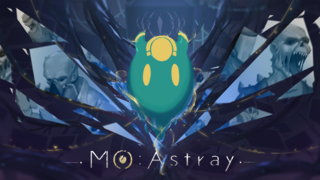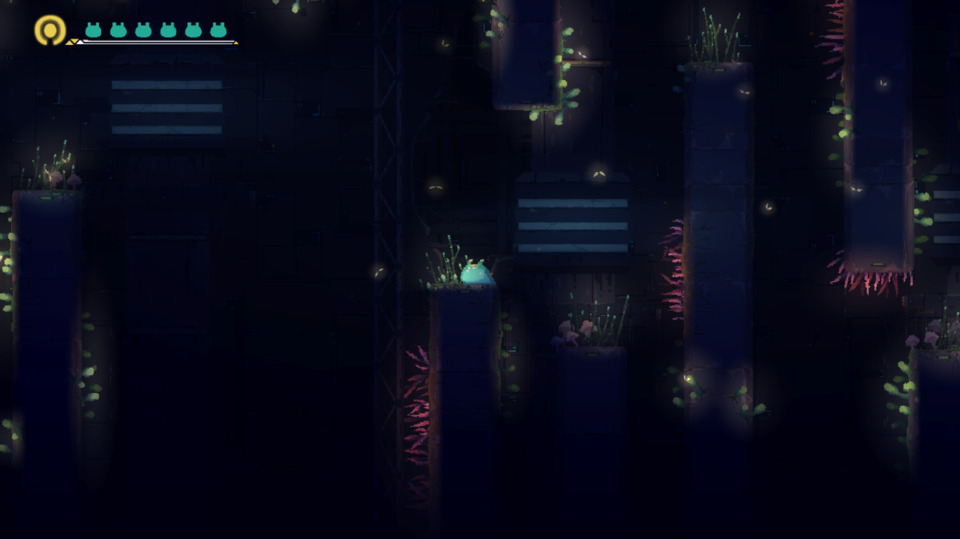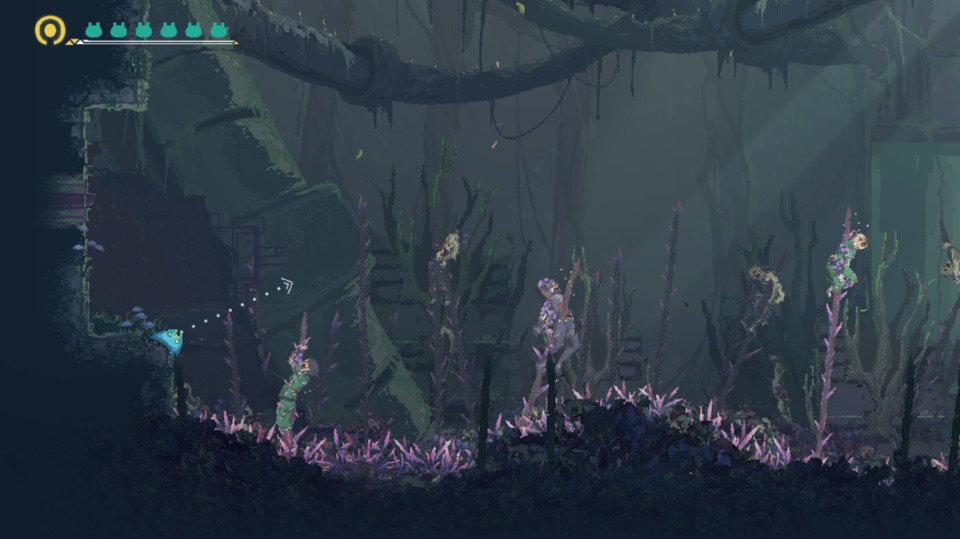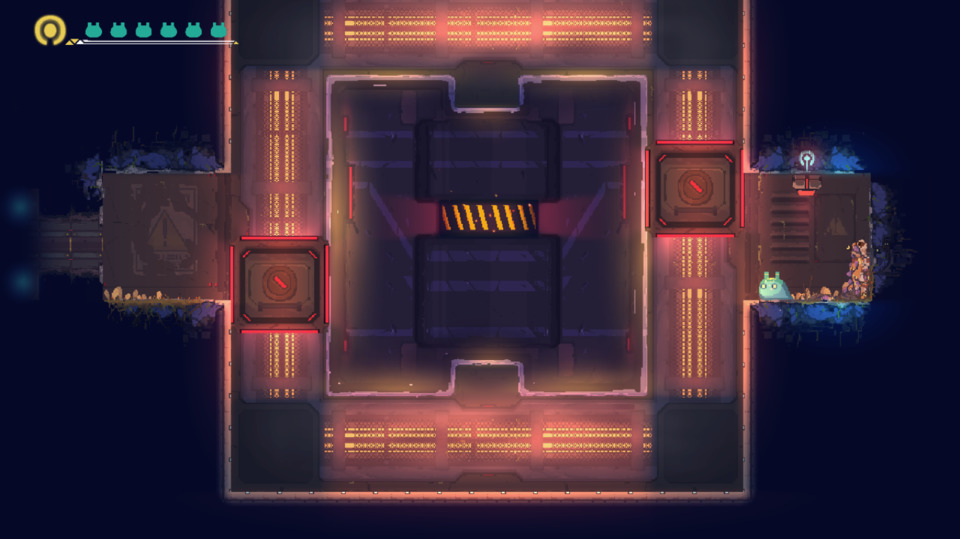Indie Game of the Week 180: MO:Astray
By Mento 1 Comments

I'm going to have to come to terms with the fact that the greatest impediment to this feature - beyond my brain's fun little trick of making my own typos invisible to me - is that my system simply can't keep up with even the 2D pixel-art games coming out these days. That, along with my limited options for a system controller (currently the Steam controller, which might be one of the most poorly designed hunks of plastic I've ever held), meant that I really couldn't give MO:Astray the old college try it deserved. It's a shame too: the game was a gift (albeit not a gift code aimed at me specifically) so I was really eager to give it its due for my patron's sake.
Created by a Taiwanese Indie team, MO:Astray is a puzzle-platformer with a curiously incongruous presentation and a slightly awkward control scheme, both of which I'll discuss a little later. The protagonist is an amorphous blob that an enigmatic voiceover eventually starts calling "MO," and a lot of the early game is spent bouncing around and maneuvering past obstacles and hazards with a combination of catapult-hopping and special abilities that MO acquires as the game progresses. MO:Astray isn't a true explormer, as each of the game's stages have a linear path and are disconnected from one another, but there are the occasional collectible health upgrades and lore-related items off the beaten path if you're inquisitive enough to look for them. It's one of those games where you're given very little information from the outset and must piece together what happened from the subtext of where you go and what you encounter.

The reason I found the presentation curious is that most of the game has a very... I guess I'd call it serene vibe with its soft ambient synth and attractive-looking environments that make great use of lighting and particle effects. This relaxing atmosphere is greatly at odds with the setting itself: either a ship or a planet colony that has been infected by a mysterious gas, leaving all its former inhabitants (mostly scientists and test subjects) as horribly mutated zombies. Even the corpses that aren't ambulatory and instinctively hostile towards you leave gruesome scenes behind, and the game will occasionally allow you to see flashbacks of how certain members of this doomed laboratory died, bleeding from all orifices as the vapors transformed them into something inhuman. One major mechanic of the game is the ability to bounce on a creature's head and temporarily take them over: in gameplay terms, this allows you to access switches built for human hands or "persuade" your bodyjacked victims to set off traps for you Abe's Oddysee-style, but it's always kinda horrific to watch. Not just conceptually, either: by hitting the activate button while possessing a foe, you can read their personnel files and last sapient thoughts. This gives you insight into what these people were working on, their opinions on fellow scientists or the local environment, and how they ultimately met their ends - this info can sometimes be useful but usually just sad and upsetting. None are more heartbreaking than when you possess the Geemer-like wallcrawler enemies, who were invariably all young children transmogrified by unconscionable experimentation and almost every one of their last thoughts were of childlike panic and pain and confusion. It's... a lot to swallow, but thankfully while you still need to possess these erstwhile kid-bugs to traverse the environment you aren't obligated to pry into their innermost feelings.

Speaking of traversing the environment, the game uses a targeted catapult system for movement akin to something like Dandara or Angry Birds where you aim the right analog stick a direction and hold forward (or back, if you want proper slingshot controls) a certain amount to apply power before releasing and flinging yourself airborne. This technique is mostly used for passing over obstacles or wall-climbing, as you can just sludge around normally on solid ground. MO can affix itself to walls and ceilings too, but only briefly: it's usually enough to wall-climb a narrow shaft or use the ceiling as a brief stopping point to cross a gap, though it can also be used to put yourself out of harm's reach in a pinch. Unfortunately, this movement system is easily the worst part of MO:Astray. The dotted-line arcs aren't as accurate as they're depicted, because gravity starts pulling you down far sooner than you'd expect, meaning most jumps after the initial second or two are a crapshoot because you can't effectively do those calculations in your head. More often, unless the distance you're trying to bounce between is very small, you'll miss the target and simply plummet straight down to earth (or into a pit of spikes, as is more frequently the case). A mid-game acquisition of a double-jump brings with it its own problems: if you have some serious lag, which seemed to follow me around at all times in this game, your timing will be off upon hitting the second-jump prompt and it ends up being useless. There are points where you need to move quickly, perhaps because some falling debris is chasing you down an elevator shaft, and these catapult controls and the fine-tuning they need are woefully inadequate for the level of split-second accuracy that is required - this type of hurried platforming might've been more approachable if time slowed down as you were aiming, or something to that effect. I got stuck in a room with two crushing blocks going around an endless circle for what felt like an hour, simply because I couldn't command the sort of dexterity needed to escape them with the jump-aiming controls provided: it the first time the game had ever thrown anything that difficult at me also, so I was unprepared for it on top of these technical issues. Excuses, excuses, I know.

There's aspects of MO:Astray I'm utterly fascinated with, as its sci-fi horror and gore are frequently uncompromising in their grisliness and totally at odds with its gentle music and cutesy blob protagonist and voiceover (who speaks in what sound like little girl gasps and hums with subtitles underneath, probably to make localization easier) and I'm loving the way a full picture is slowly forming as I keep reading the brains of dead/dying people and picking up little hints here and there of the catastrophe that ensued, if not yet my role in it or who my talkative benefactor might be, but trying to actually make progress has become a Sisyphean prospect I'm really not in the mood for. This might be one I come back to later when I have fewer technical issues weighing the experience down, even if it might not amend my reservations entirely, because there's definitely something special going on with this odd little slime game.
Rating: 3 out of 5.
| < Back to 179: Hidden Paws | The First 100 | > Forward to 181: The Lost Art of Innkeeping |
